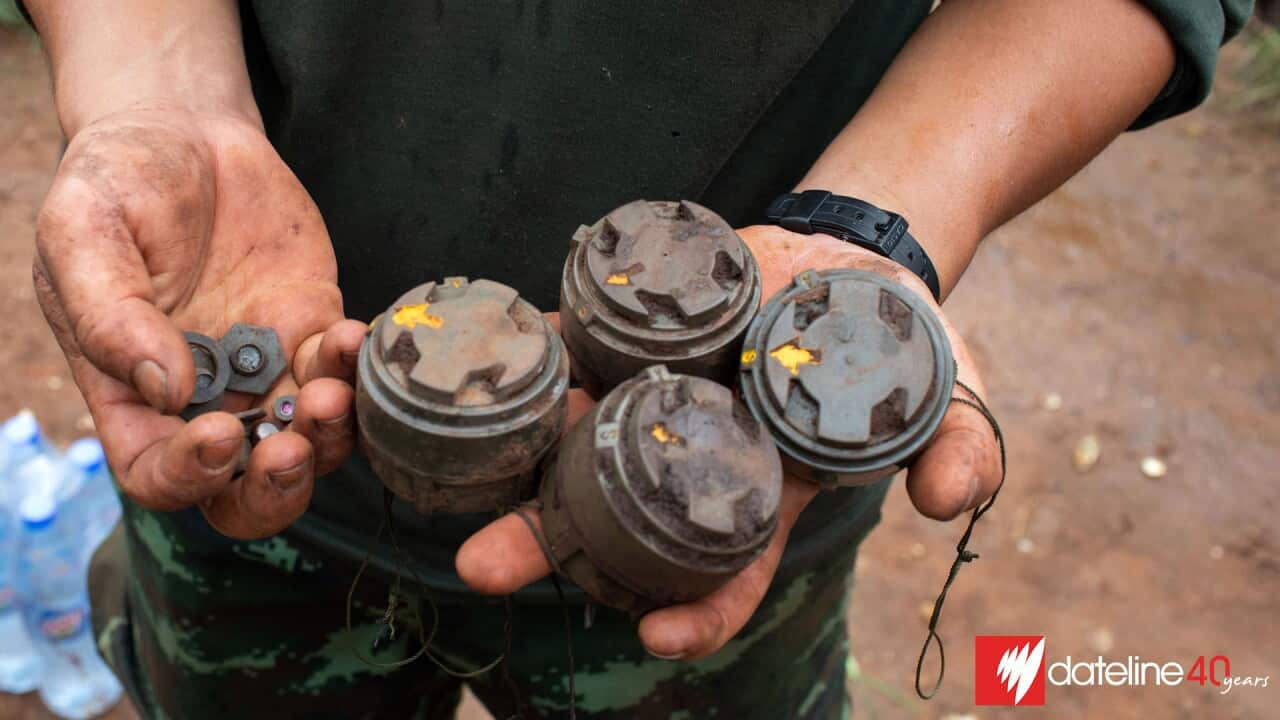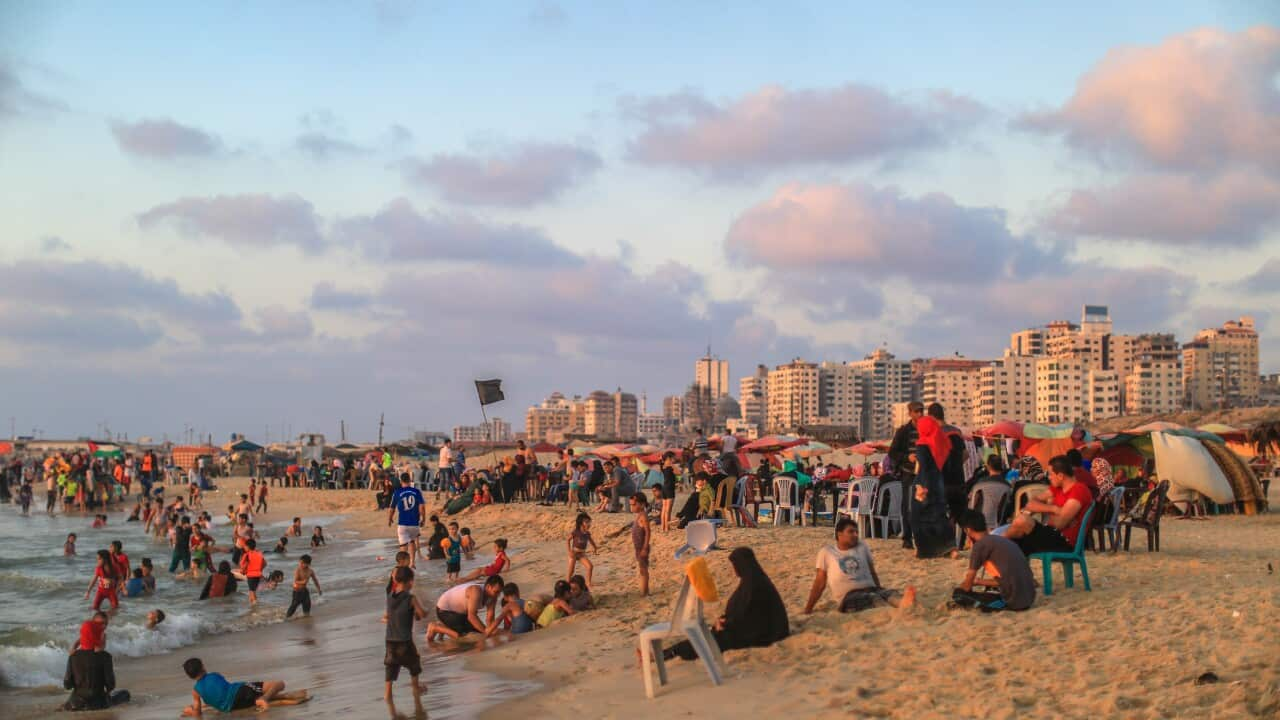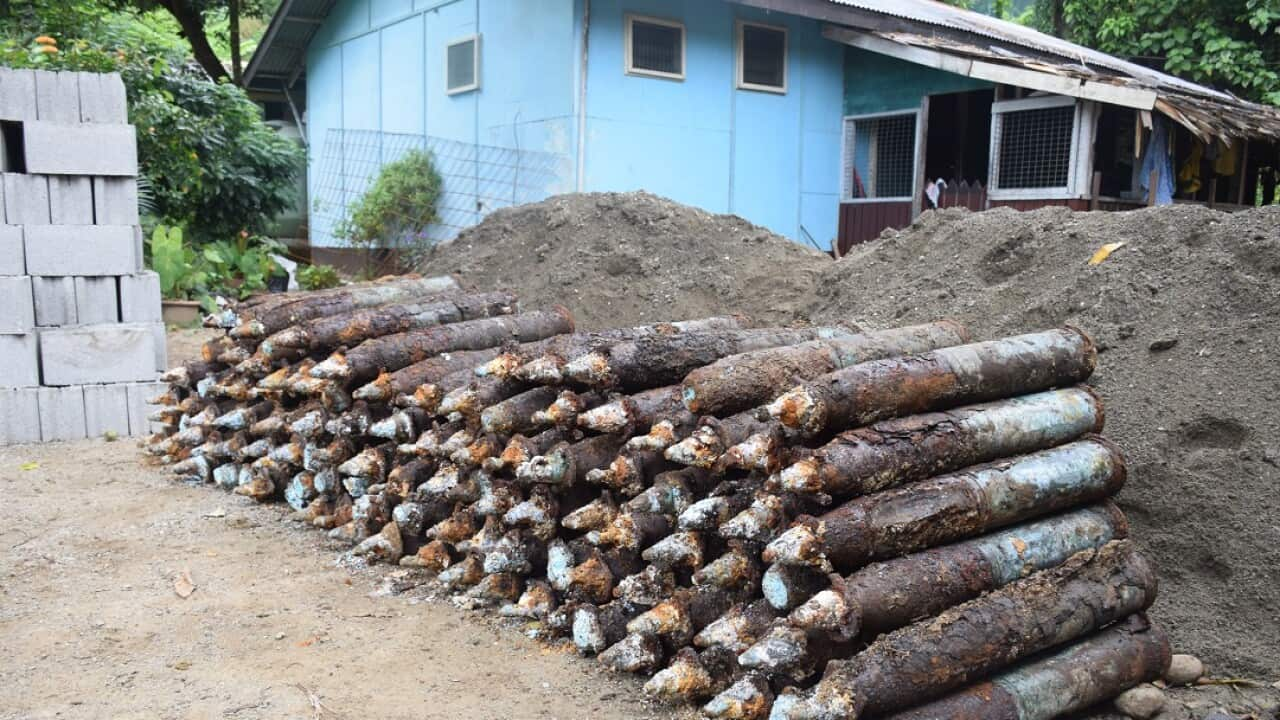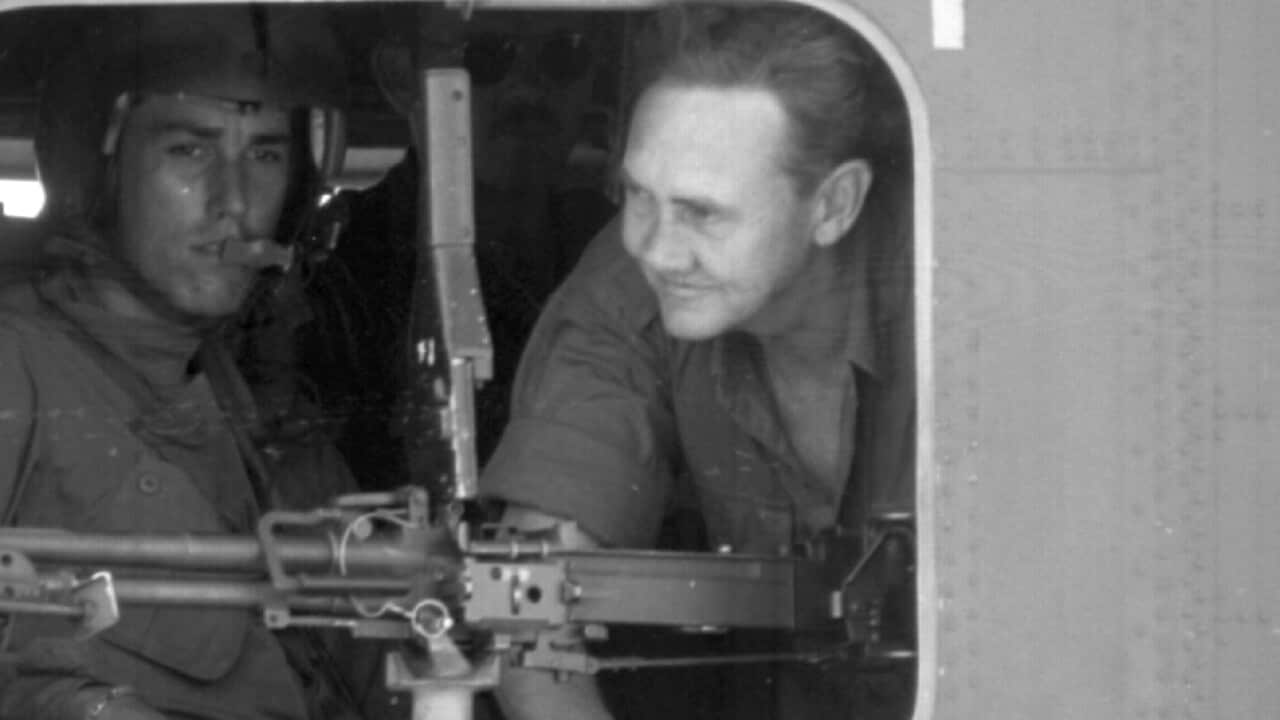Stream free On Demand

Vietnam Veterans Reunited
episode • Dateline • Current Affairs • 28m
episode • Dateline • Current Affairs • 28m
There are moments from the Vietnam War that haunt Bruce Nakashima — moments he hasn’t spoken of in the decades since he returned home.
He’ll never forget the terror he felt in a helicopter, in 1966, wounded and weak, as he watched his fellow American soldiers throw Vietnamese prisoners to their deaths.
"I remember I was getting kind of weak, and I looked over at LV to make sure he was breathing, but he wasn’t conscious for a while," Bruce recalled, referring to his friend LV Hendking who was wounded alongside him.

More than 58,000 US soldiers were killed in the war, which lasted from 1955-1975. Source: Getty / Patrick Christain
"Their hands were tied behind them, and they looked like young boys, like us," he said.
"They just threw them out.
"[The American soldiers] started pushing the prisoners out and then [one] looked at me and grabbed me. I knew I was next.
"That's like, gory, ugly shit.
"I feel very guilty that I couldn't maybe stop it ..."
Bruce was only saved because of LV, who intervened despite his own severe injuries.

Bruce Nakashima (right) became isolated and lonely after being separated from his best war-time friend LV (left).
During the war, he faced many instances of racial discrimination, despite volunteering to fight and believing he was an American patriot.
Bruce and LV were taken to hospital but separated shortly after the incident — it took them more than 50 years to find each other again.
Heritage and hate

The US Government forced over 100,000 Japanese-Americans to leave their homes and live in internment camps for the duration of the war, as a measure to prevent potential saboteurs.
"My dad was fighting in Germany and Italy, and we were over here," Bruce recalled.
"He wouldn’t say much. I can't say he ever hugged me or told me he loved me or anything. But he’s my dad, and I had a lot of respect for him."
Despite having mixed heritage and having been born in an internment camp, Bruce identified strongly as an American.
"So when Vietnam was starting off, I said, 'Well, I better volunteer too.' [Dad] didn't want me to go."

Bruce Nakashima volunteered to serve in Vietnam despite his father’s wishes. He saw himself as an American patriot.
Between 1955 and 1975 the US sent over 2.7 million soldiers to fight with its South Vietnamese allies against communist-backed North Vietnam and the guerrilla force, the Viet Cong.
Australia sent over 60,000 troops to fight in Vietnam.
More than 58,000 American soldiers and 523 Australian soldiers were killed in the war. In 1995, Vietnam estimated up to two million civilians and more than one million North Vietnamese and Viet Cong soldiers were killed in the conflict.
The war ended in 1975 after North Vietnamese forces took control of South Vietnam.
Among those who fought for the US were approximately 4,000 to 5,000 Japanese-Americans, many following in the military footsteps of their fathers and uncles who had fought in World War Two and the Korean War (1950-1953).
On the surface, Naksashima was accepted by his fellow soldiers; He was called "Nak," short for Nakashima.
But underneath that camaraderie he was the target of hate, not just from the enemy but from within his own unit — because to them, he looked like the enemy.
Nakashima said: "One time an officer asked me, 'Hey, would you put these black pyjamas on? I’d like to take a picture and tell him you were captured VC [Viet Cong].'

Bruce Nakashima was asked to dress as an enemy combatant by a senior military figure.
"I was angry at first, but then, there was nothing I could really do about it. I felt, 'what am I doing here then?'
"I would see these people that were dead, and they reminded me of my parents, my brothers and sister, and reminded me of my grandpa."
An unlikely friendship

Bruce Nakashima lost contact with his war-time friend LV Hendking (pictured) for over 50 years.
Despite their different backgrounds, Bruce and LV formed an unbreakable bond, forged in combat and strengthened by their shared experience as minorities in a predominantly white military.
LV first met Bruce at Fort Benning and remembers asking, "Are you Chinese?"
Bruce corrected him: "No, Japanese."
Bruce said, "He was a big, strong black kid. Until I got in the service, I never had contact with black people. Never."
LV, too, had little experience with Asian people. "I knew they existed, but I never met one or saw one in Alabama," he said.
LV was Bruce’s lifeline during the war. Twice, LV saved Bruce — once during a firefight that left Bruce severely wounded, and again during the helicopter incident.
For Bruce, LV was the only person who could understand the pain and guilt that he felt and he spent years trying to find him after the war.
Living with shame
Bruce said the war filled him with shame.
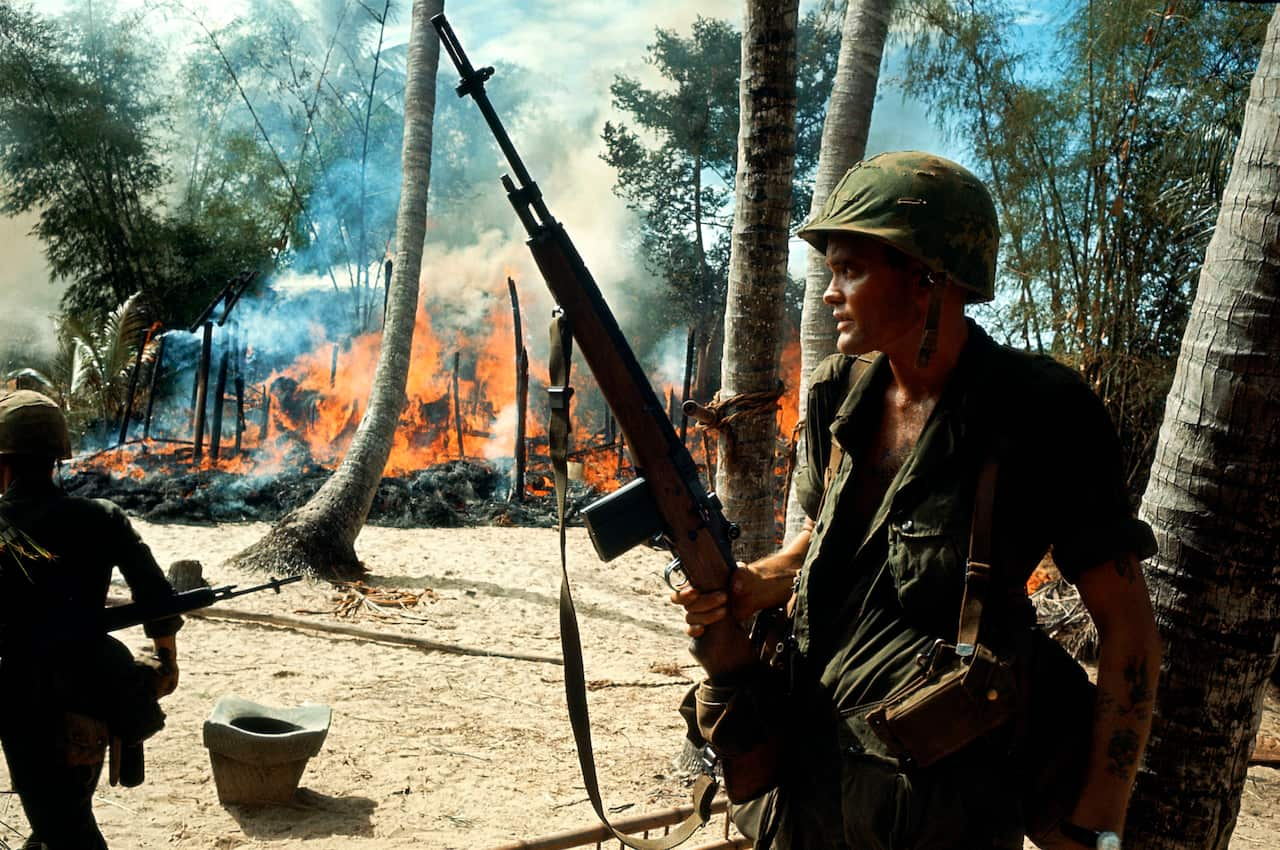
The wisdom of US involvement in the Vietnam War and its outcomes have been widely debated. Credit: Dominique BERRETTY/Gamma-Rapho via Getty Images
"I was kind of standoffish about having any type of relationship with Asians. I couldn't explain it to my mom and dad, so I detached. I didn’t have anyone to talk to," Bruce said.
For decades, Bruce believed his friend LV had died from his injuries – it deepened his sorrow and isolation.
Then, one Christmas, Bruce found LV through a Facebook post.
"I'm looking for LV, we were in the First Cavalry together in Vietnam", it said.
"Nak, is that really you? I’ve been looking for you for years!" came the reply.
A path to healing

Bruce and LV finally reunited at Bruce’s home in Los Angeles.
"Well, shit the bed, is that you?" Bruce cried in disbelief.
"Oh my God, oh man, I’ve been looking for you for a thousand and one years! Every time I’ve been to California - I’ve been looking" LV responded.
Reconnecting with LV allowed Bruce to finally confront the helicopter incident that had haunted him for years.
"He grabbed onto my arm and pulled me and just held onto me," Bruce said.
"Thank you for saving my life."

Bruce and LV reunited at Bruce's home in Los Angeles.
He even went on to reconnect with other people from his past, including old school friends.
Bruce said: "I still feel resentment. I volunteered to go over there. Spilled a lot of blood.
"But reconnecting with LV mended a lot of my hurts, negative thoughts, feelings.
"I let some of that stuff go … I’m getting to the point where I’ve got to forgive myself. And I’m working on that."
Readers seeking support can contact Lifeline crisis support on 13 11 14, Suicide Call Back Service on 1300 659 467 and Soldier On Australia on 1300 620 380.
ADF members and their families can call the Defence all-hours Support Line, a confidential telephone and online service, on 1800 628 036.
Open Arms provides 24-hour free and confidential counselling and support for current and former ADF members and their families on 1800 011 046.


